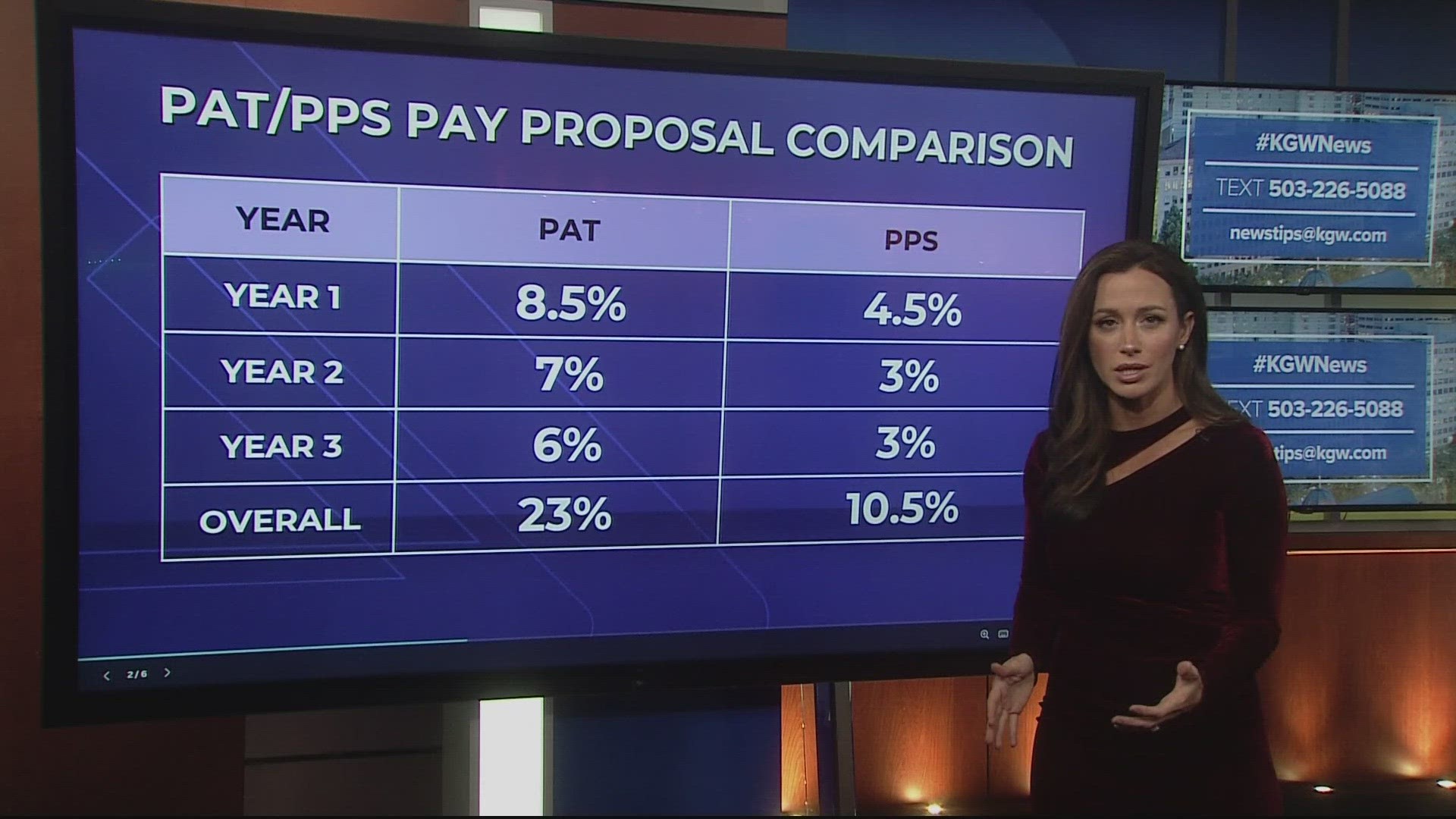PORTLAND, Ore. — Educators with Portland Public Schools hit the picket lines Wednesday, kicking off an unprecedented strike amid an ongoing contract dispute centered the issues of teacher pay, class sizes and planning time. Classes at the district's 81 schools are already canceled at least through the end of the week, and it's unknown how long the strike will last.
The two sides are facing what the district has described as a roughly $228 million gap between their respective contract proposals. A last-minute new proposal from the district Tuesday afternoon failed to move the needle to avert the strike.
There are additional sticking points, including standards for building cleanliness and maintenance, temperature conditions in classrooms and student discipline procedures. But pay, class size and planning are the most frequently-cited issues, and the most expensive in terms of how much more the district has said it would need to spend if it accepts the union's proposals.
Here's a look at those three big sticking points, and what each side has put forward:
Educator pay
According to PPS, the minimum teacher salary under the current contract is $50,020 per year, with a maximum of $97,333, based on a salary schedule that accounts for education level and years of experience. There are also some flat-rate add-ons for things like holding a doctorate degree in a field related to a teacher's subject.
The district is offering a 10.9% raise over three years, broken down into 4.5% in year one, then 3% in each of the next two years. During a news conference on Tuesday, district officials said they had not increased the salary offer in their latest proposal because they had already increased it three times previously during the bargaining process — from an initial 2.5% per year to 3% per year, then to 4% in year one and finally the current 4.5% in year one.
The union's contract proposal asks for an average pay increase of 23% over three years, broken down into 8.5% in the first year, 7% in the second year and 6% in the third. The union argued in a Tuesday post on its website that the district's raise schedule would lock in an effective 8% salary reduction when weighed against the rate of inflation.
The gap between proposals for salaries alone is about $60 million, according to the latest offers from both sides.
Class sizes
Both sides have acknowledged that class size is crucial to student learning, but the union wants to put hard caps in place, meaning that once a class is full, no more students would be able to join that class. The district favors its current system, which puts limits in place but allows the district to exceed them. Teachers receive additional pay if their classes get too large.
The union's proposed caps are 23 students per kindergarten glass, 25 students per first grade class and 26 per class for all other elementary grades. For middle and high school, they want to cap the total number of students taught per day at 150 for middle school teachers and 160 for high school teachers.
The district says that's not possible because it would require PPS to hire more teachers at a time when enrollment is already declining. The district also argues that a hard cap system could create situations where individual students are forced to change schools or miss out on graduation requirements.
The class size limit is a costlier sticking point than salaries, according to the district, because fully implementing the union's proposal would force PPS to hire as many as 500 teachers at a cost of over $200 million. The union has accused the district of refusing to even engage on the subject in bargaining.
Planning time
The current contract gives teachers one class period per day for planning time at the middle and high school levels, and a total of 320 minutes of planning time per week for elementary school teachers. The union is seeking an increase to 440 minutes per week, or 88 minutes per day, which would apply to teachers at all grade levels.
The district previously offered 400 minutes per week for elementary school teachers, and officials said Tuesday that the newest PPS proposal would fully match the 440 minutes that union sought for elementary school planning time, but the district has maintained that it can't do the same for middle and high school teachers without costing students instructional time.
The union reacted negatively to the Tuesday proposal, arguing that the new offer was regressive and would have a cumulative effect of reducing planning time for many teachers.
A cost breakdown on the district's website put the gap between the two proposals for planning time at just over $100 million back when the district was still proposing 400 minutes per week for elementary teachers.

